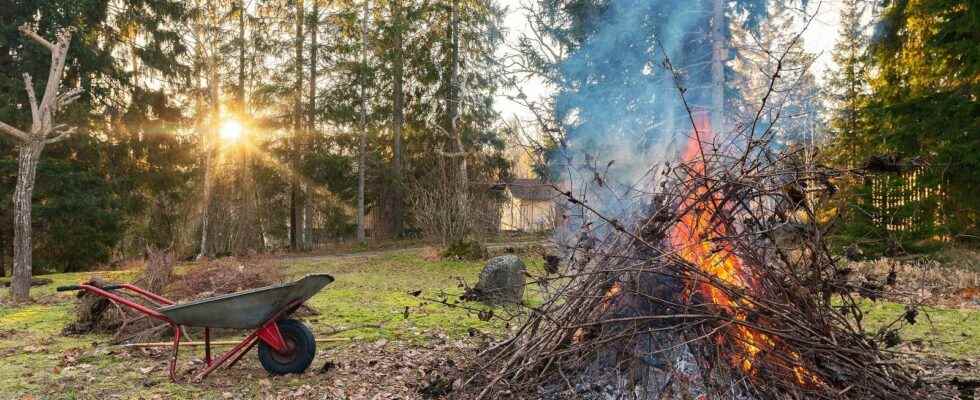All year round, the garden must be clean. The gardener must constantly cut stems, faded flowers, collect leaves in the fall, prune branches and twigs, collect lawn clippings and many other wastes. What can he do with it? Burn them? Recycle them?
You will also be interested
[EN VIDÉO] Over a million seeds stored at the Svalbard Global Seed Vault The largest seed reserve in the world is located on the Svalbard archipelago in Norway. It was designed to deal with the decrease in biodiversity and genetic diversity. The “vegetable Noah’s Ark” is home to more than a million seeds from all over the world.
The leaves of treeswithered flowers, mowed blades of grass, waste pruning or pruning are all plant waste that the gardener must get rid of. What can he do with it? Can he burn them or to recycle ?
Green waste burning
In all municipalities, green waste cannot be burned by individuals. Green waste burning forbidden by law, except by prefectoral decree. If you are an outlaw, you may be subject to a fine of 450 euros. The disturbances caused by the neighborhood are too important as well as the risks of fire. Moreover, the combustion waste toair free releases pollutants such as fine particles. Even in a incinerator garden closed by a cover, the operation is prohibited. Throughout the year, residues from mowing, pruning, clearing, trimming hedges or dead leaves cannot be burned. All questions and answers on the subject on service-public.fr.
What alternatives to burning green waste?
These wastes are, for the most part, biodegradable and are free natural resources. It would be a shame to deprive yourself.
A large part of plant waste can feed the compost by carrying out home composting. In addition to biowaste or food waste (vegetable and fruit peelings, eggshells, coffee groundsetc.), wilted leaves and flowers, weeds, dead vegetables from the vegetable garden and other vegetables removed from the garden (those not gone to seed) can be placed on a pile of compost. Store them to alternate layers of brown or green waste. This compost made with materials recycled will serve as a natural amendment to enrich the soil. Don’t deprive yourself of this 100% free organic matter.
All the branches and twigs can be transformed into chips, once passed through a shredder. This 100% natural ground material, also called BRF (Wood fragmented rameal) can serve as mulching at the foot of shrubs, hedges or beds of perennial plants. It will protect and nourish the soil as it decomposes, retain freshness, prevent weeds to grow and protect plants from climatic conditions (gel, drought, cold). Take advantage of this natural resource to feed your garden.
- Deposit in landfill
Everything can be collected and brought to a sector drop-off centre. Areas are specially dedicated to discarded plants. They will be incinerated or crushed by a waste disposal center and then used as chips.
Interested in what you just read?
